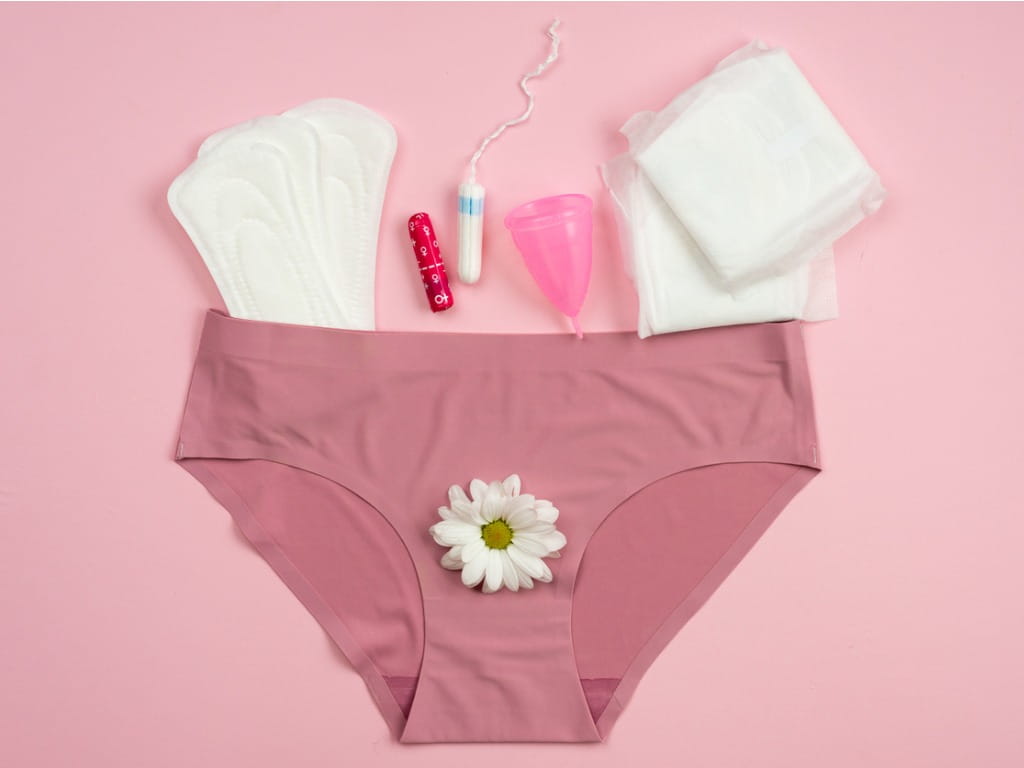Is Period Underwear Safe to Use?

The Bottom Line
Period underwear is marketed as an easy-to-use, sustainable, and safe alternative to menstrual pads and tampons. The underwear is crafted from natural and synthetic materials, including cotton, metal ions, and waterproof compounds. Although PFAS may be present in some types of period underwear, there is currently no proof that this is harmful to human health.

What is period underwear?
Period underwear, also known as menstrual underwear, is reusable underwear with built-in absorptive capacity. It is marketed as an alternative to tampons, menstrual pads, or menstrual cups, but can also be used in conjunction with these devices. Common brands of period underwear include Thinx, Knix, and Cora. Advantages of period underwear include its ease of use and sustainable characteristics.
What is period underwear made from?
Period underwear contains multiple layers, composed of different fabrics, to absorb fluid, block odor, and prevent leakage. The inner layer, which sits closest to the body, typically contains porous material that draws fluid away from the body and into the highly absorbent middle layer. The outer layers contain leak-resistant polyester material and decorative fabric.
How effective is period underwear?
Period underwear manufacturers advertise that the products can hold as much as 10 tampons worth of menstrual fluid, depending on individual factors such as blood flow and tampon use characteristics. Period underwear is typically reusable. Many period underwear companies recommend that their garments should be washed after each use according to manufacturer’s instructions (typically in cold water on a delicate cycle) to maintain their quality.
Does period underwear contain chemicals?
Period underwear can contain a variety of natural and man-made fabrics including cotton, nylon, spandex, and polyester. Some period underwear brands may also contain metals, including silver and copper ions, that are used to block odor. Certain period underwear products are advertised as being free of toxic chemicals including per- and poly-fluoroalkyl substances (PFAS), while others claim to use “as many clean ingredients as possible”.
Why do some period underwear brands contain PFAS?
PFAS is a term used to describe more than 9,000 chemicals that are added to fabrics, cookware, and other consumer products to create stain-, grease- and water-resistant properties. Although period underwear manufacturers do not specifically list PFAS as a component of their products, PFAS are likely added to period underwear’s outer layers to enhance the water-repellent and leakproof qualities of the products.
Does the body absorb PFAS found in period underwear?
There are no published medical studies that have evaluated the potential dangers of PFAS in period underwear. Since PFAS are added to fabrics to impart waterproof characteristics, it’s unlikely that they are intentionally added to the inner absorbent layers of period underwear that are closest to the skin and genital region. Additionally, it is unclear whether washing period underwear removes PFAS from the products, making human absorption less likely to occur.
Is period underwear approved by the FDA?
The United States Food and Drug Administration (FDA) regulates many menstrual products as devices, including tampons and reusable menstrual pads. Although many menstrual products do not require FDA approval prior to being sold, especially if those products have substantially similar designs and formulations to other legally marketed products, manufacturers still must register their products with the FDA prior to marketing.
Does a “green” certification mean that a product does not contain PFAS?
In one study, PFAS were detected in “green”-labeled clothing and fabrics that were advertised as being water- and/or stain-resistant. The authors of the study concluded that “green” assurances cannot be uniformly used to confirm the absence of PFAS in consumer products.
What other products contain PFAS?
PFAS are present in many non-stick products including cookware and cooking utensils, and can also be found in greaseproof food packaging and stain-resistant fabrics. PFAS are found throughout our environment, and are present in drinking water, air, and food. PFAS are also present in cosmetics, dental floss, solar panels, and other industrial and consumer products.
Are PFAS harmful to humans?
PFAS are present in the bloodstream of nearly every American. Since we are continually exposed to PFAS on a daily basis, it can be challenging to definitely link PFAS exposure with the development or progression of human diseases. Some animal and human studies have linked PFAS exposure to various adverse health effects including cancer, diabetes, and obesity, but the exact relationship between PFAS and human health remains unclear. Overall, human life expectancy is increasing, although declines have occurred in recent years due to COVID-19 and drug overdoses. Given that humans are living longer overall, it’s unclear whether our daily exposures to PFAS are causing harmful health effects.
What do you do if period underwear makes you sick
If someone experiences unwanted or unexpected symptoms after use of period underwear, get guidance from Poison Control immediately. Help from Poison Control is available at www.poison.org and by phone at 1-800-222-1222. Both options are free, confidential, and available 24 hours a day.
Kelly Johnson-Arbor, MD
Medical Toxicologist
For media inquiries, please contact Krista Osterthaler at osterthaler@poison.org.
Poisoned?
Call 1-800-222-1222 or
Prevention Tips
- Use period underwear as directed by the manufacturer.
- Read household product labels carefully to understand the ingredients or components.
- Interpret “green” certifications with caution, as standards may vary.
This Really Happened
In 2020, a Sierra Club magazine reporter mailed her Thinx period underwear to a scientist at the University of Notre Dame. The Notre Dame scientist tested the underwear for toxic chemicals, and detected the presence of PFAS in the crotch area of the underwear. A class-action lawsuit was filed against Thinx, alleging that the company misled consumers by advertising its product as a “safe, healthy and sustainable choice for women” and being “free of harmful chemicals”. The lawsuit was settled in January 2023. As a result of the settlement, individuals who purchased Thinx underwear between November 2016 and November 2022 are eligible to receive a cash reimbursement of $7 for up to three pairs of purchased underwear, or a voucher for 35% off a future underwear purchase. More information about the settlement can be found at https://www.thinxunderwearsettlement.com/.For More Information
What to Know about PFAS in Period Underwear (New York Times)
Thinx settled a lawsuit over chemicals in its period underwear. Here's what to know (NPR)
References
Rael. FAQ. Available at: https://www.getrael.com/pages/faq. Accessed January 24, 2023.
Poisoned?
Call 1-800-222-1222 or
Prevention Tips
- Use period underwear as directed by the manufacturer.
- Read household product labels carefully to understand the ingredients or components.
- Interpret “green” certifications with caution, as standards may vary.
